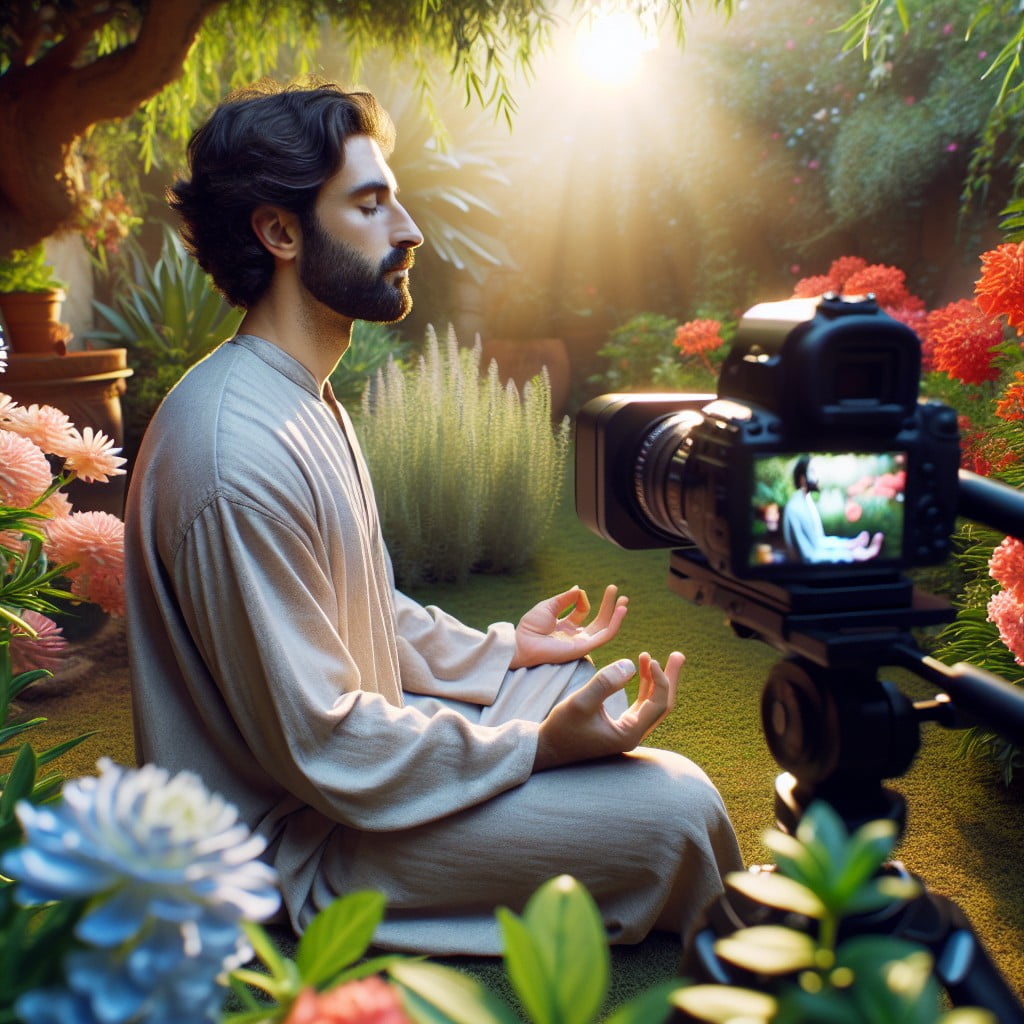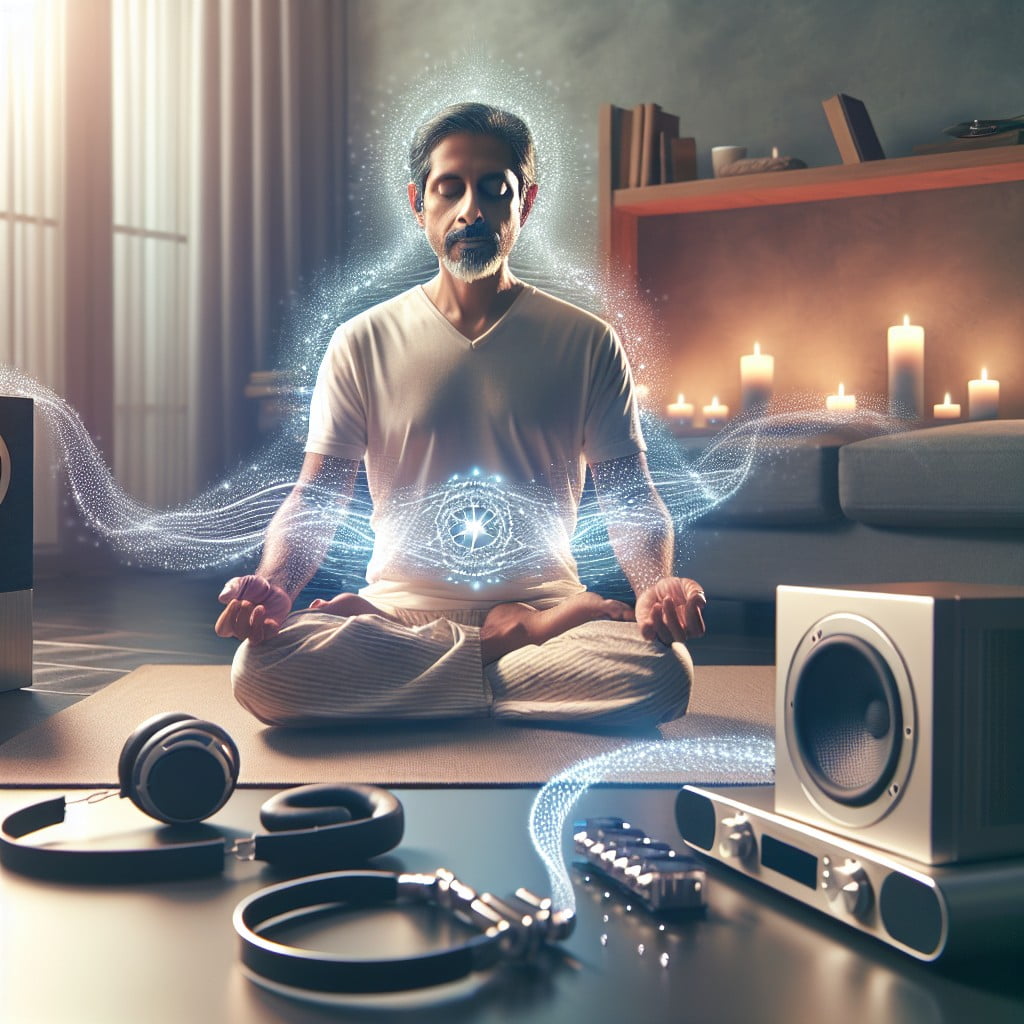Creating a meditation video becomes straightforward and enjoyable when order is followed because it provides the pathway to translate mindfulness techniques into a digital experience.
Creating a meditation video is a wonderful way to share the benefits of mindfulness and inner peace with others.
This process involves careful planning, including selecting a tranquil setting, writing a soothing script, choosing calming background music, and using quality recording equipment.
It’s also crucial to understand the basics of video editing to ensure a professional result.
This article will guide you through each step, providing detailed instructions to help you produce a meditation video that will inspire and relax viewers.
Dive in to discover everything from scriptwriting to post-production tips.
Key takeaways:
- Conceptualize your meditation video: Identify audience, duration, location, and style.
- Write a mindful script: Select a theme, guide the journey, incorporate quotes, maintain simplicity.
- Enhance the meditation experience through filming techniques: Choose a peaceful location, use relaxed angles, consider pace and camera movements.
- Pay attention to sound quality: Aim for clarity, minimize background noise, balance voice and music, choose appropriate music, and edit the sound.
- Post-production editing: Focus on pacing, transitions, fine-tuning, consistency, and create harmonious titles and end credits.
Conceptualizing Your Meditation Video

Delving into the creation of your meditation video, it’s vital to first cement a clear vision for your project. Often, this starts with pinpointing your intended audience. Maybe it’s beginners seeking to understand the basics of meditation, or perhaps more advanced practitioners looking for a more intensive guided experience.
Next, determine the duration of your video, factoring in necessary time for the viewer to fully immerse themselves in the meditation. It could be a quick 5-minute stress relief session, or a long, 30-minute deep relaxation journey.
Consider the choice of location for filming. This could be indoors with a serene backdrop or outdoors surrounded by natural scenic beauty. The goal is to choose an environment that exudes tranquility and helps focus the mind.
Also ponder upon the style of meditation you’d want to guide your viewers through. Is it a focused-attention meditation where concentration is on a single point? Or perhaps it’s mindfulness meditation where the goal is maintaining awareness of the present moment?
Finally, the overall tone and mood of the video should align with your vision. A soft, low voice for relaxation, or a slightly energetic tone for energizing meditations will make a significant difference. All these factors combined will lay a strong, clear foundation for your meditation video creation.
Writing a Mindful Script for Your Meditation Video

Commencing with an essential draft of your video’s narrative is beneficial. The intent of the script is to lead viewers through a reflective and introspective journey, making the script’s content crucial.
1. Select a Theme: Identify a mindfulness theme that caters to your target audience. It can range from general relaxation to more specific topics like stress relief, improving concentration, or managing anxiety.
2. Narrate a Guiding Journey: Ensure your video is nurturous by creating a narrative that guides viewers through the meditation practice. Provide illustrative, sensory-rich language to evoke calmness, allow intuitiveness, and enrich the meditative experience.
3. Make Appropriate Pauses: While preparing the script, pay deep attention to timing. Do not rush. Building in mindful breaths and pauses allows your audience time to absorb your guidance.
4. Incorporate Inspirational Quotes: These can serve as affirmations, reinforcing the positive benefits of the practice.
5. Maintain Simplicity: Mindfulness words should be easy to grasp and process. Stay away from complex terminologies that might disrupt the viewer’s mindfulness state.
6. Include Encouraging Phrases: It’s helpful to intermittently confirm the correctness of the meditative practices, ensuring viewers feel supported and encouraged.
This careful orchestration of words will help construct a mindful script that promotes relaxation and intuitive understanding, enhancing the overall effectiveness of your meditation video.
Filming Techniques to Enhance Meditation Experience

Finding an undisturbed location is critical. Look for a space that stimulates a peaceful environment such as a garden bathed in natural light or a room adorned with calming aesthetics. The less clutter and distraction, the better, as attention should be on the meditative process.
Choose an angle that reflects relaxation and tranquility. Low, relaxed angles work best, avoiding harsh or dynamic shots that may distract or cause anxieties. Be mindful to use soft, warm lighting. Harsh or intense lighting can detract from the soothing atmosphere central to meditative practices.
Consider the pace of your video. Speed can affect the viewer’s state of mind. Swift movements or dramatic scene changes can stimulate arousal or excitement, responses contrary to the desired state of peace and relaxation. Slow, gentle pan shots or static frames promote concentration and tranquility.
Lastly, keep camera movements to a minimum. Jerky or erratic movements can break the viewer’s concentration and inhibit their ability to engage fully in the meditative process. Smooth movements, balanced composition and flow contribute to an immersive, peaceful meditation experience.
Importance of Sound Quality in Enhancing Meditation

Sound plays a central role in the meditative experience, often serving as a focus for the participant. Here are key points to consider to ensure optimal sound quality:
- Sound Clarity: Aim for clear and crisp sound quality. Distorted or muddled sound can detract from the viewer’s experience. Use a high-quality microphone to record your voice and the background music.
- Background Noise: Ensure your recording environment is quiet. Unwanted background noise can be distracting and interrupt the meditative process.
- Audio Levels: Balance the volume of your voice with the background music. Neither should overpower the other. Voice should be easily audible but still soothing and the music should not distract from your voice instructions.
- Choice of Music: Select calming and soothing music that fits the meditation theme. Different types of meditation may require different types of music.
- Sound Editing: Use decent audio software to edit the sound. The editing can remove any unwanted noises, equalize the sound levels, and make the overall audio more compelling.
By paying attention to these aspects of sound, you can significantly enhance the quality of your meditation video, providing a peaceful and effective meditation experience for your audience.
Post-Production: Editing for a Cohesive Meditation Video
Securing cohesive flow is an integral step in your post-production process. Pacing, transitions, and fine-tuning of video content significantly impact the viewer’s experience.
1. Pacing: Create a calm, relaxing pace throughout the meditation sequence, ensuring a comfortable, unhurried experience for your viewers.
2. Transitions: Smooth video transitions are key. Opt for gentle fades or dissolves between shots which create a serene, soothing atmosphere.
3. Fine-tuning: Pay careful attention to each second of the video. Make sure your visuals perfectly align with the spoken content to create a synchronous meditation journey.
4. Consistency: Consistent color grading and imagery throughout the video can enhance viewer immersion.
5. Title and end credits: Be creative but keep within the harmonious aesthetic of the video. Inform viewer about the meditation practice without disrupting the peaceful atmosphere.
Remember, your aim is to create a congruent, immersive experience that will guide viewers through their meditation journey with ease.
Using Appropriate Tools for Effective Video Editing
In the context of video editing, leveraging the right tools is paramount to produce an impactful meditation video. Tools not only aid in refining the visual aesthetics but also enhance the overall sensorial experience, ultimately fostering a tranquil environment for the viewer.
i. Advanced software such as Adobe Premiere Pro, Final Cut Pro, and iMovie provide a varied range of editing features. These allow altering the visual dynamics, adjusting the color scheme, and fine-tuning the footage to reflect serenity and calmness symbolized by meditation.
ii. Smoothening transitions between scenes is crucial to maintain a seamless flow. It prevents abrupt or shocking shifts, securing the viewer’s relaxed state. This can be achieved through fade-ins and fade-outs or by incorporating gentle cross dissolves.
iii. Background noise or irrelevant sounds can be distracting for the viewer. Sound editing tools help suppress these noises and emphasize the calming tones, instructive voice, or soothing music that shapes an enriching meditation experience.
iv. For a higher level of sophistication and customization, plugins and additional tools can be used. These offer a multitude of effects, filters, and enhancements like configuring the video’s pace to mirror the rhythm of a restful heartbeat or a gentle breath.
Remember, the goal should always be creating an environment that facilitates focus and tranquility for anyone engaging with your video, and using the correct tools effectively can substantially contribute to this ultimate aim.
Strategies to Increase Awareness and Visibility of Your Meditation Video
Firstly, leveraging social media platforms can significantly bolster visibility. Regularly posting brief clips or stills from your meditation video on Instagram, Facebook, or Twitter engages your existing audience, and potentially attracts new followers.
Additionally, consider collaborations with notable figures in the mindfulness field. Having an established mindfulness teacher or a wellness influencer share or feature your video can act as an endorsement and spread awareness among their follower-base.
Search engine optimization (SEO) is another effective way to increase video awareness. Use relevant keywords in your video title, description, and tags to improve your search ranking on platforms like YouTube or Vimeo.
Hosting live sessions or workshops on platforms like Zoom or Google Meet can also enhance user interaction. This live engagement allows viewers to ask questions, share their experiences, and create a sense of community.
Lastly, paid advertisements can provide a significant boost to your video’s visibility. Platforms like YouTube, Facebook, and Twitter offer targeted ads that can reach a specific audience interested in meditation and mindfulness.
Remember, consistency is critical. Regular updates, interactions, and new content are essential in keeping your audience engaged and curious about your work.
FAQ
Can you make money with meditation YouTube videos?
Indeed, it is possible to earn money with meditation YouTube videos, especially through methods such as showing advertisements on your content via Google AdSense.
How long should a meditation video be?
The length of a meditation video can vary greatly, ranging typically from 5, 10, or 20 minutes, and extending up to 8 or 10 hours for relaxation or sleep-focused content.
What is the best app to record meditations?
The best app to record meditations is Mindist, a first-of-its-kind platform that allows mindfulness teachers to quickly and conveniently create quality audio meditation content straight from their phone.
What equipment is necessary to produce high-quality meditation videos?
High-quality meditation videos need equipment like a professional video camera, a high-definition microphone for clear audio, appropriate lighting equipment, and video editing software for the perfect creation and blending of visuals and sound.
How do you effectively structure a guided meditation for a video?
To effectively structure a guided meditation for a video, select a clear focus or theme, develop a script with a beginning relaxation phase, middle mindfulness or visualization phase, and an ending grounding phase, and match the vocal cadence and background music to the meditation's mood and purpose.
How does one market and distribute their meditation video to reach a larger audience?
To reach a larger audience for a meditation video, one can employ online marketing strategies such as utilizing social media platforms, optimizing SEO, engaging with the online meditation community, collaborating with popular wellness influencers, and submitting the video to meditation and mindfulness blogs or websites.